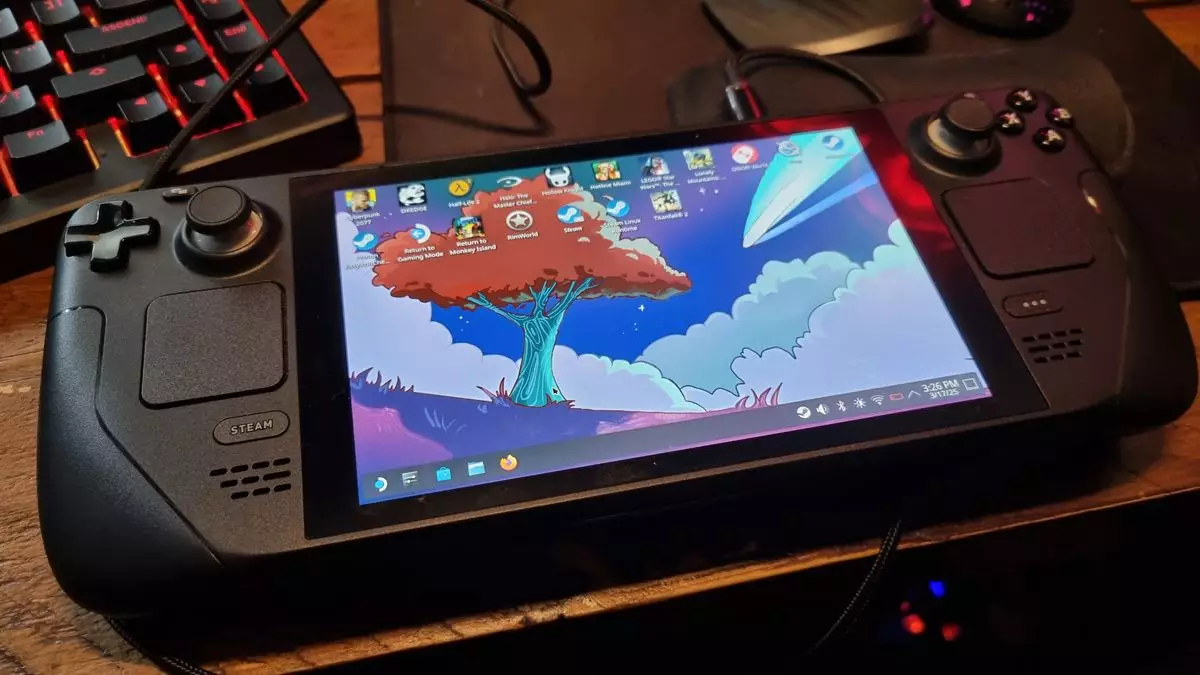SteamOS, Valve’s Linux-based operating system, made a significant debut alongside the Steam Deck in 2022, revolutionizing the handheld gaming landscape. Its arrival marked a pivotal moment for gamers, merging the powerful capabilities of PC gaming with the convenience of portable devices. However, despite its initial success and continued improvements, the reach of SteamOS beyond the Steam Deck has been slow, leaving the door wide open for exploration in the handheld market as we await further innovations.
The recent announcement regarding the Lenovo Legion Go S, anticipated to run on SteamOS, adds an intriguing dimension to this narrative. While Valve has laid the groundwork for support in its SteamOS 3.7.0 Preview update, scheduled for release in May, this initiative represents just the beginning of a long journey that could change the fate of handheld gaming.
Enhancements and Features in the New Update
One of the standout aspects of the latest SteamOS update is the introduction of Plasma 6.2.5, which significantly enhances the desktop mode experience. The revamped interface, accompanied by floating panels and an organized settings menu, indicates Valve’s commitment to user experience. The nostalgic “cube effect” reintroduction—where users can spin through multiple desktops—adds a touch of flair reminiscent of the late ’90s hacker aesthetics, making the interface engaging and visually appealing.
Moreover, the update also promises improvements in Bluetooth connectivity, display compatibility, and system stability during updates. These enhancements suggest that Valve is not only focusing on aesthetics but is also addressing core functionality, which has frequently been a point of contention among users.
However, as this is a preview iteration, it is inevitable that users may experience bugs or glitches. For example, encountering unexpected desktop flashes or hangs due to pressing the power button could deter some less tech-savvy individuals from fully embracing the experience. It’s a reminder that while progress is being made, releasing updates that come packaged with potential pitfalls might still challenge user reception.
Future Prospects: A Promising but Uneven Road Ahead
The question arises: is it too late for SteamOS to gain traction among non-Steam Deck devices? The current landscape of handheld gaming is diverse, with many alternatives offering unique launcher interfaces that function seamlessly in Windows 11. These devices boast user-friendly progressions for launching and categorizing games, which could overshadow SteamOS’s integrated approach.
Yet, Valve’s strategic positioning within the handheld realm could symbolize a growing shift. There is an undeniable allure in the seamless integration of Steam and easy access to a vast library of games. This can provide a competitive edge for SteamOS as it opens its doors to other handheld devices. The challenges ahead include distinguishing the SteamOS experience as the preferred choice for immersive handheld gaming while also solidifying its presence in a cluttered marketplace filled with varying levels of functionality and design.
Community Response and The Potential for Broader Adoption
Community engagement continues to play a critical role in shaping the future of SteamOS. Gamers are passionate about the potential of expanding handheld experiences and are eager to share their feedback and frustrations regarding updates like the one discussed. Valve has the unique opportunity to harness this community input effectively, allowing for more tailored features and refinements that resonate with users’ real expectations.
As the Steam Deck and Lenovo Legion Go S pave the way, the question of how effectively Valve can capitalize on the burgeoning handheld market remains to be seen. Nevertheless, even minor advancements can propel a platform toward greater acceptance if executed seamlessly and in tune with gamer desires.
Ultimately, the momentum built through regular updates and enhancements to SteamOS could open the floodgates for a wave of new handheld devices. Remarkably, it may also reignite interest in newer iterations and ideas, reinforcing Valve’s mission to not only compete but to innovate and lead in the gaming industry landscape. Excitement for what lies ahead continues to brew, as players remain hopeful that SteamOS will live up to its potential in the coming years.

